The official launch of the new family of high-performance processors has been crowned with the debut of the Intel Core i9, microprocessors of the Skylake-X family that changes the bet and focuses on offering up to 18 process cores and 36 threads of execution in its most powerful model, the Core i9-7980XE.
Why has Intel launched these microprocessors? The answer is simple: [AMD and its imminent ThreadRipper] (AMD also wants to win the multicore battle, a Ryzen with 16 cores and 32 threads), models of the new Ryzen family that will also bet on a multicore architecture that in the case of this manufacturer will reach the 16 cores and 32 threads of execution. Why so many nuclei? Who should bet on these processors?
Intel accepts the …
Intel’s strategy with these releases attacks three distinct segments: LCC (Low Core Count), HCC (High Core Count) and XCC (eXtreme Core Count). In that first group are for example the Core i7-7820X, which are an interesting answer to the AMD Ryzen 7 1800X, as pointed out in AnandTech :
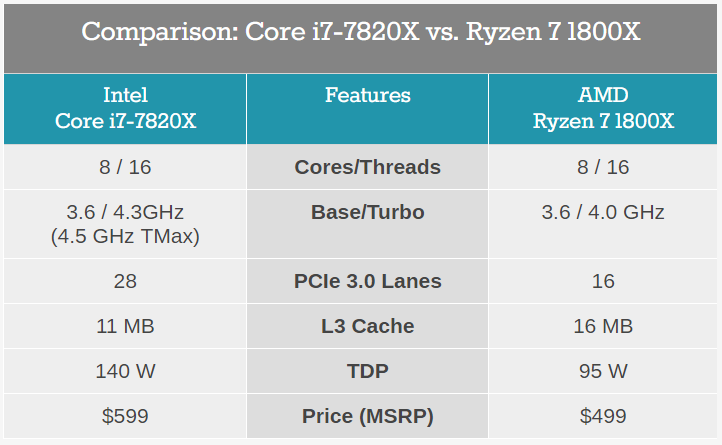
As you can see, the similarities between the two are evident, although on the Intel paper it outperforms AMD at maximum working frequency (especially now that the “Turbo Boost Max 3.0” technology debuts for even more powerful performance), while AMD is More interesting for those who seek to reduce consumption and for who also wants to save 100 dollars.
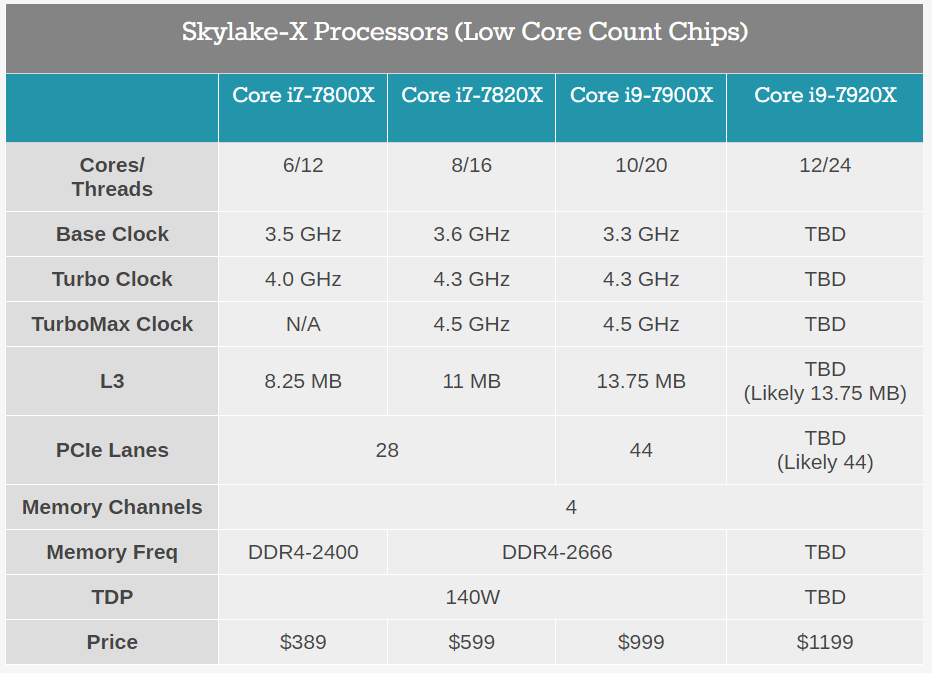
From there things get interesting … and expensive. The Core i9-7900X reaches 10 cores and 20 threads of execution, although to reduce it a little the native clock frequency. In return, yes, comes with more tracks PCIe, DDR4-2666 memory support and, yes, an already high price 999 dollars.
… and send more with its 18-core HCC micros
The interesting thing here is not only that proposal with that “low number of cores” (who would say that 10 cores were few), but the fact that Intel has put all the meat on the grill with the HCC processors Skylake-X.
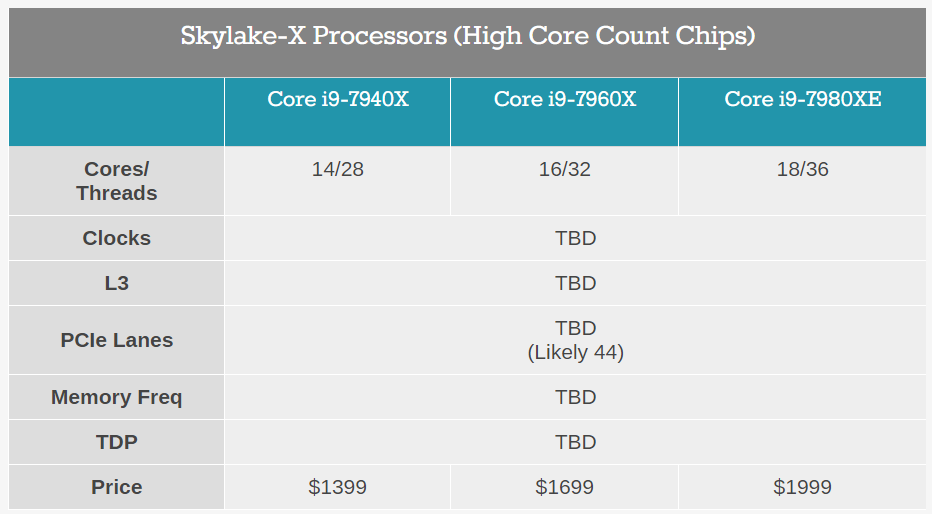
We barely have data on them, but we do know already that we are talking about microphones with technology of 14 nm that in Core i9-7980XE reach those 18 cores and 36 threads of execution.
As the rest of the 165, 140 and 112W presented micros will make use of the LGA Socket 2066, in turn it is only compatible with the chipset X299 at the moment. True bestiality in both multiprocessing and price potential: not everyone will be able to afford the $1999 they will cost when they become available. The date, by the way, is totally unknown.
Waiting for AMD’s response
Data and leaks on those promising AMD microprocessors Ryzen Whitehaven (“Threadripper”) make us expect models that will not be as ambitious as that Core i9-7980XE, but almost.
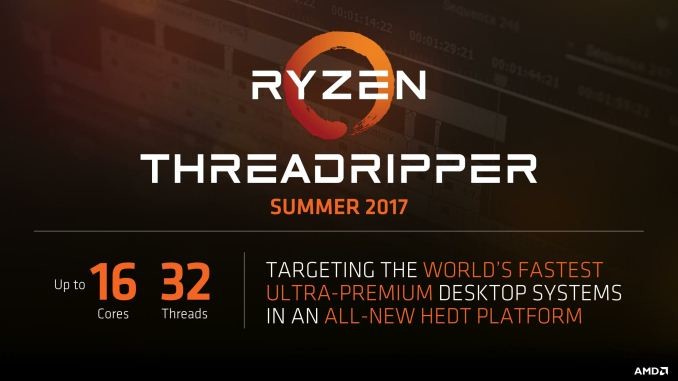
Instead of 18 cores, we will have to “settle” with 16, but it will be interesting to check the other specifications and, above all, the price of those models.
We will probably know more about these micros tomorrow, but as in the case of Intel the bet is clear: the HEDT (High End Desktop) sector of consumers who want the best of the best and are willing to pay. The benefits will be noticeable both in number of cores and in number of PCIe tracks or even level 3 cache.
You may also like to read: Qualcomm Snapdragon 660 and 630: Bluetooth 5, Quick Charge 4 and dual cameras for mid-range smartphones
Nuclei matter, but gigahertz also!
The presentation of AMD Ryzen left us with an interesting proposal from AMD in which the battle was not so much in Gigahertz as in the number of cores.
Although the tests of the Ryzen 7 1800X showed us that their performance in games was not as striking as some expected, what was clear is that this micro was an off-road beast that gave much play precisely when one took advantage of all those cores concurrently.
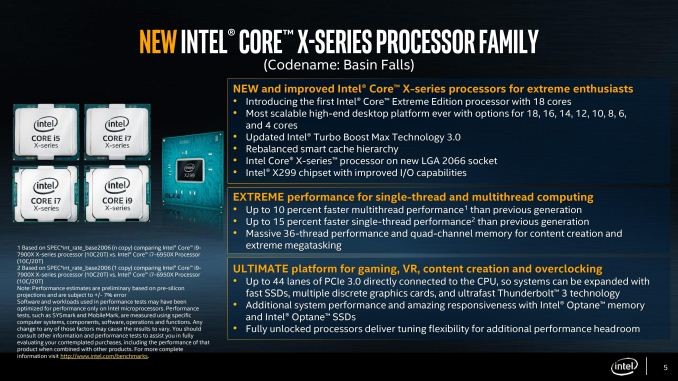
That is not normal in the gaming segment, where the IPC is everything. Intel micros like the Core i7-7700K are usually the favorite gamers in this case, although AMD promised – and demonstrated Ashes of Singularity – if game developers were able to adapt their titles to this type of multicore processors, Things could change.
The truth is that it is likely that this is not the norm, and here we have to consider one thing: neither the new Intel microprocessors nor the AMD are aimed at gamers. They are in fact models with features until recently not only available in products for servers, which now reach the end user to take advantage of them in different scenarios.
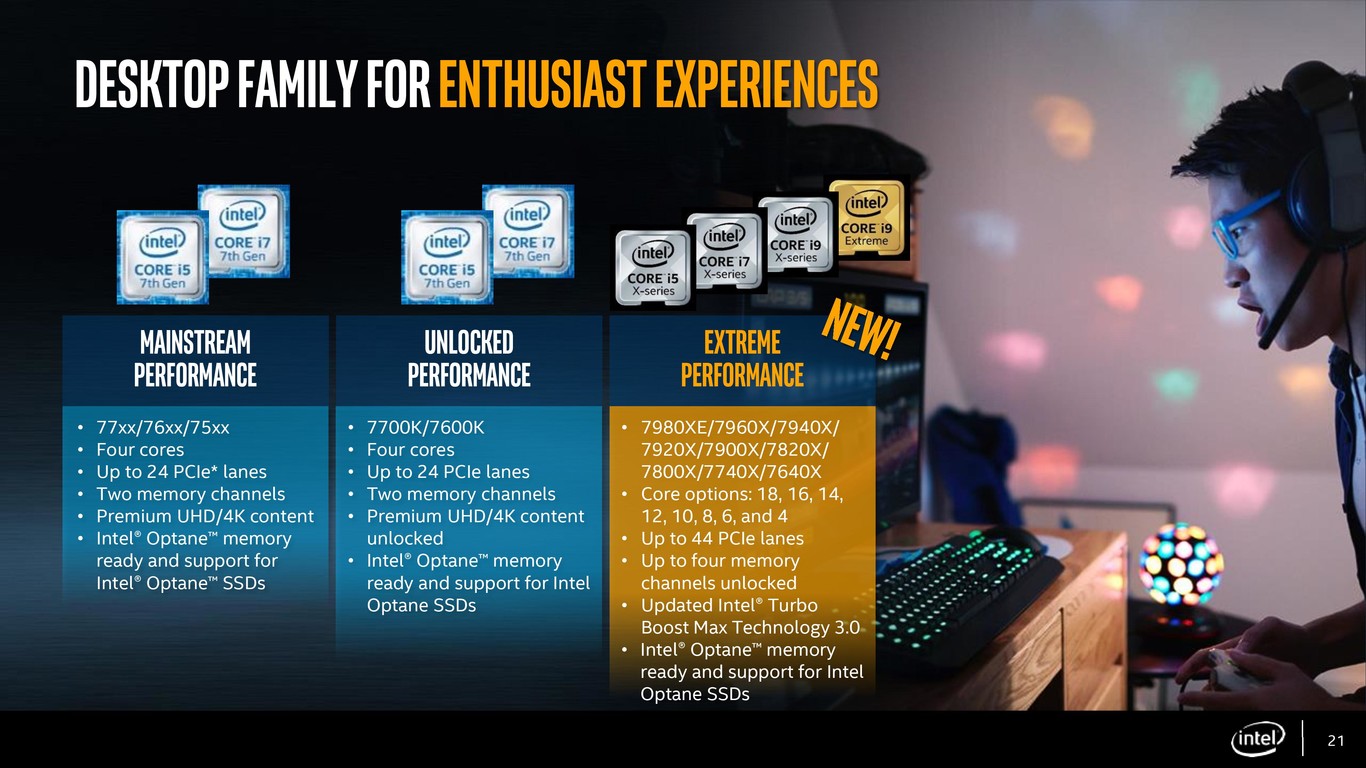
Which? Of course, those in which concurrency and multiprocessing capacity are important. Where you can do many things at once is where these micros give the chest. We usually talk about very demanding tasks and in which the developments have been achieved with a high degree of parallelism: 3D design or video editing are among those scenarios.
In fact, this is something we have talked about for some time. The bestial Intel Xeon E5-2699 V5 family of servers-oriented Skylake-EP has no less than 32 cores and 64 threads of execution, and as we said then, scientific applications and cloud computing in which multitude of services Run in parallel are clear examples of where these CPUs are used.
If you’re a gamer, look away
The new processors of Intel and AMD with that surprising number of cores will be destined therefore to other type of users who value above all those scenarios on others like the gaming, in which we insist, gigahertz continue counting (and much).
It is true that Intel Turbo Boost Max 3.0 technology could help in this area. The idea is to “favor nuclei” that have different characteristics of frequency and voltage and can function “forced” more easily.
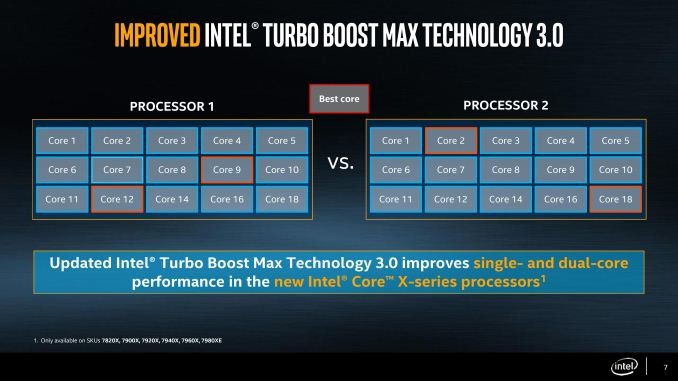
In the Skylake-X family just introduced there will be two of these “favored cores” that will be able to run at the highest frequency (those 4.5 GHz of the Core i9-7900X, for example), but only those two cores Will do for two applications that take advantage of them, or even one (and that could be a game) that may need those two cores at certain times.
Even so, the accounts do not come out: unless you play as much as you design in 3D or you make complex scientific simulations, if you are a gamer, it is best that you choose micros with less cores and more frequently work for those cores. Still, as we always say, the options are good, and these new proposals from Intel and AMD encourage a market that was somewhat stopped lately. Keep the party going!
Tags: AMD Ryzen, Intel Core i9
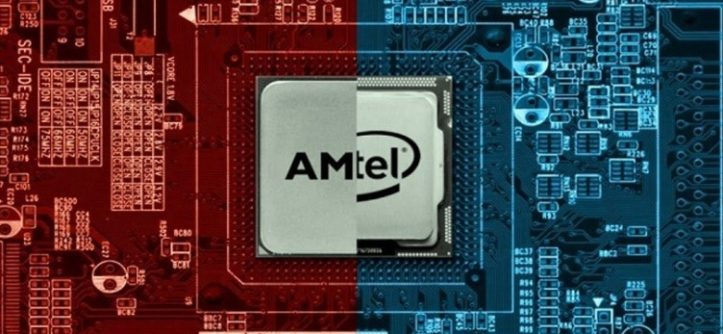



Leave a Reply